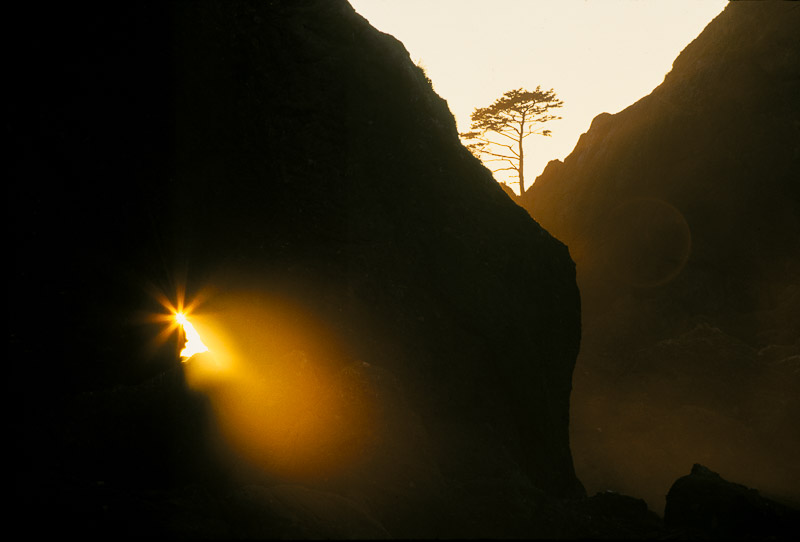
Starbursts are created where light bends through lens aperture blade intersections, essentially an error that’s magnified by small lens apertures and bright points of light. They render best with apertures like f/16 or f/22, and wide-angle lenses that shrink the light source to a dot in the frame. A dSLR camera for control, and a tripod to handle slow shutter speeds, are mandatory for a quality shot.
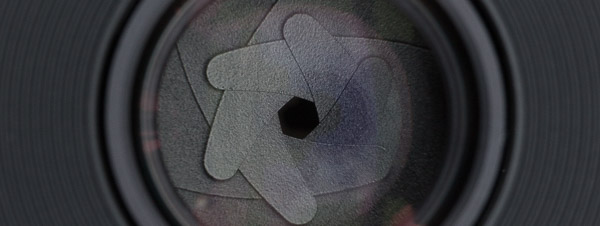
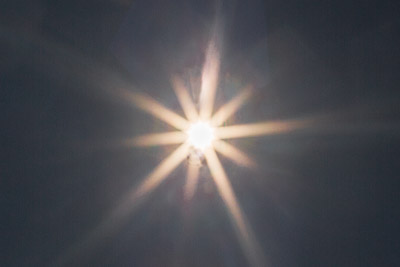
A small aperture opening is advantageous, so shoot f/22 rather than f/11. The wider the lens, the better the burst as well. A 14mm lens reduces the sun size to a pin prick, and is therefore a generally better choice than a 24mm, definitely better than a 50mm. Wide angle lenses have tinier openings at any given f-stop. The small aperture better diffracts the light that creates the starburst. So if you have a 14 or 16 or 17mm lens, use it.
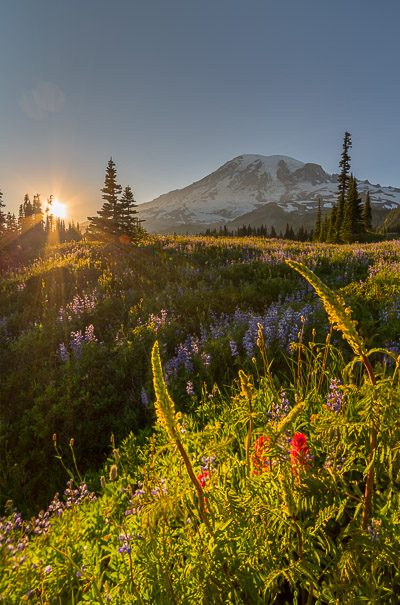
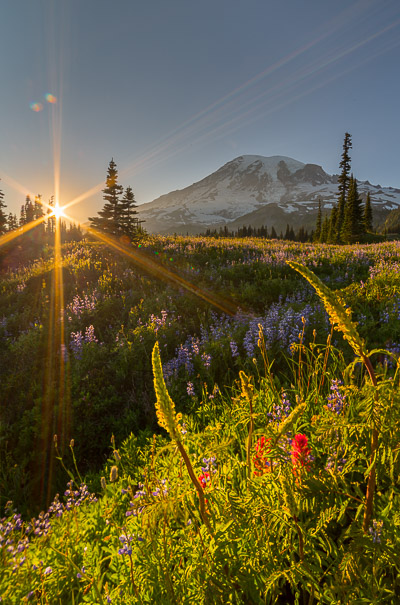
A way to further shrink bright sources like the sun, regardless of lens choice, is to partly obscure it by careful, partial placement behind a tree-limb edge or mountain ridge. This is an easy to learn skill, but you must act quickly before the sun moves off.
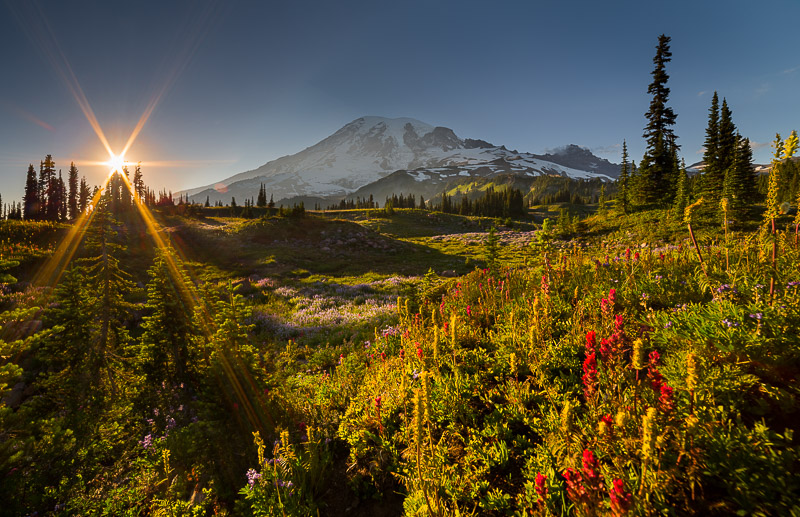
Stopping down all the way to f/22 reduces image resolution, another fact of diffraction. This softening is a problem if you’re after top-quality landscapes. Shooting at f/16 helps a bit, but opening the aperture reduces the starburst you’re trying to maximize. A solution is to shoot the scene at both f/22 and f/8, and blend the two in post for dramatic and high-resolution results.
Lens flare can be an issue as well, caused from direct sunlight bouncing around in the lens elements. Older, poorly-coated lenses, especially old zooms, suffer from this the most. If you find it a problem (flare at times can be pleasing), shoot the starburst at f/22 with the sun dead center in the frame. Re-compose (at f/8). Then in Photoshop insert the flare-free starburst into your carefully-composed shot.
When I shoot the sun, I bracket a few stops, especially by underexposing. I then create an HDR composite in Lightroom or Photoshop that avoids blown whites except for a small, central portion.
With all the camera control required, a dSLR and a tripod are keys to success. The dSLR gives you lens selection and aperture control. The tripod fixes your position for slow shutter speeds and multiple exposures. I usually use a cable release as well, but a 2-sec time delay coupled with mirror-lock works just as well.
Beware that looking at the sun through a viewfinder can damage your eye. Wait until the sun nears the horizon, and shoot wide-angle only.
Starbursts can be created with thread-on filters, and even with software. I haven’t toyed with either, but I have seen the results. I’ll take my starburst creations in the field, hands down.
Gary